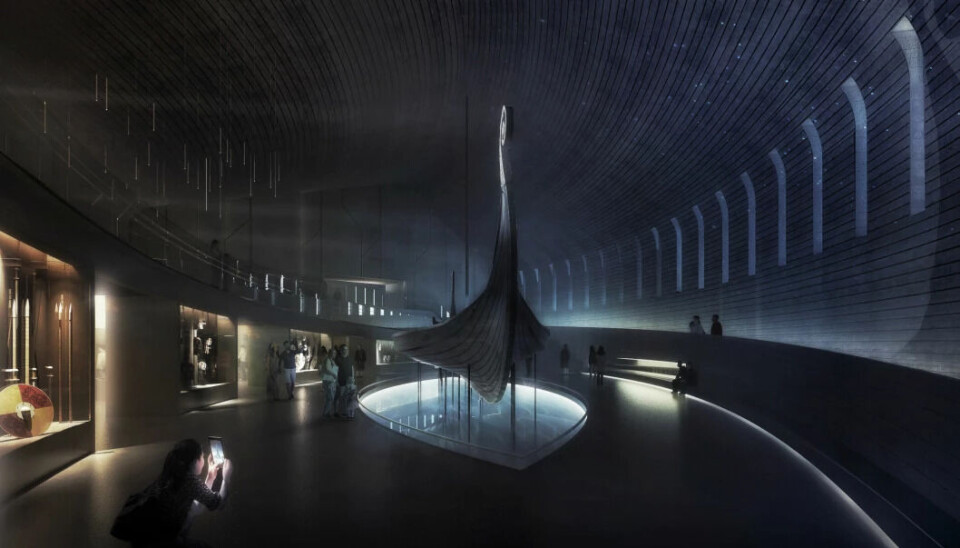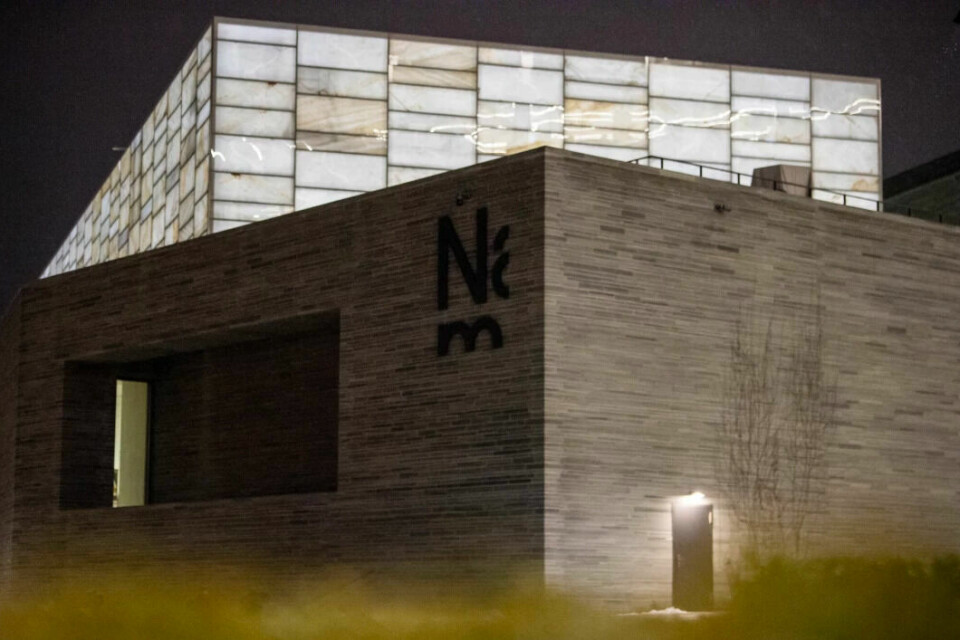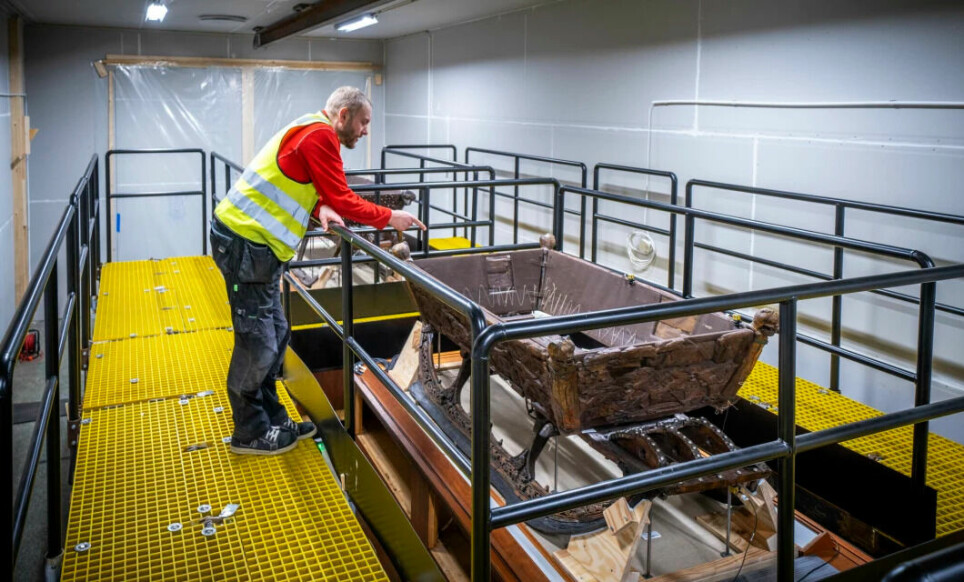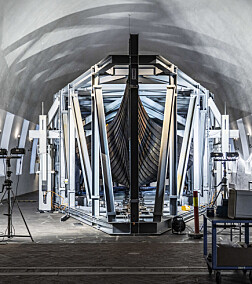
The supplier of display cases for the new Viking Age Museum is being sued by another museum. Then NASA got involved
Fragile objects are safe in the new displays, the Norwegian Directorate of Public Construction and Property (Statsbygg) and the National Museum assure us. The latter already uses display cases from this supplier.
Recently, it became known that the Italian company Goppion will supply display cases for the new Viking Age Museum, which will open in 2026. The newspaper Vårt Oslo (Our Oslo) wrote about it (link in Norwegian).
The new National Museum in Oslo is already equipped with displays from Goppion.
This means that Norway's most valuable – and fragile – objects will be housed in these display cases for a long time to come.
Sued
In 2021, Goppion was sued by the University of British Columbia (UBC) in Canada, as reported by the Canadian newspaper Business Intelligence of B.C.
The article also states that the university claims other museums have struggled with the same problems.
UBC alleges that the company supplied defective display cases to the Museum of Anthropology that began to form crystals of chemical compounds that were harmful to the museum artifacts. Are the Norwegian national treasures safe?
Sciencenorway.no has asked the University of British Columbia about what has happened in the case since 2021.
We have also asked which other museums have allegedly struggled with the same issues.
The university has replied that they cannot comment on an ongoing court case, in an email.
“Ungrounded and false”
“You are referring to a historical issue, which occurred almost 15 years ago,” the general manager of Goppion, Patrizia Venturini, writes in an email to sciencenorway.no.
She flatly rejects the claims from the article in the Canadian newspaper.
“The information referred to in the article is incorrect and untrue as it merely reproduces one-sided allegations which the article itself admits are neither tested nor proven. Goppion has in the meantime responded proving the allegations are ungrounded and false,” Venturini writes.
Goppion believes they have been honest about the problems, and that the matter should have been put to rest a long time ago.
Venturini directs any further questions to Statsbygg.
Goppion have replaced the product
At the National Museum of Art in Norway, the display cases are already in use. Statsbygg has been involved in the work of obtaining the cases.
“Already during the reference period, we became aware that Goppion had experienced challenges in connection with how a silicone mass had reacted with certain objects,” Rolf Yngve Uggen writes in an email to sciencenorway.no.
He is director of Collections Management at the National Museum.
He says that Goppion have laid all their cards on the table and were honest about the problem.
“They informed us that they had replaced the product in question and tested the new one in collaboration with both JPL and NASA,” he says.
“New methods of materials selection and testing have been developed in recent years,” Goppion writes, who confirms the collaboration with NASA's research institute Jet Propulsion Laboratory (JPL).

Tested and approved in advance
“All the products for the display cases were tested and approved in advance of the acquisition,” Uggen says.
The cases were open for six weeks to release exhaust gases.
“Each individual case was then closed and tested for volatile organic compounds,” he continues.
The testing does not stop there.
The air is filtered
“All the display cases in the museum are monitored on a daily basis with digital meters for relative humidity and temperature,” Uggen says.
Additionally, the air is filtered through a special filter to ensure that any harmful substances are removed.
And besides, the museum has many trained eyes at work.
“All the displays are supervised by the National Museum's conservators. They have broad experience and expertise within the National Museum's diverse artifact categories,” Uggen says. “If we find deviations, this is followed up.”
Have had a good dialogue
“This is not something unknown to us,” Hege Njaa Aschim says about the lawsuit against Goppion.
She is the communications director at Statsbygg.
Statsbygg is responsible for the new Viking Age Museum.
A competition was arranged, where several display case suppliers competed to supply cases to the National Museum and the Viking Age Museum.
Aschim tells sciencenorway.no that they have chosen Goppion as a supplier precisely because securing artifacts for the future is the main goal.
Aschim explains that it is an insurance company that has brought forward the lawsuit against Goppion. She knows there has been a controversy that UBC has wanted to take to court.
“Throughout the competition, we have had a good dialogue about this with Goppion. We are confident that we have chosen a supplier that is capable,” she assures.
Testing and monitoring
“What is interesting here is that a lot has happened in the climate testing of display cases since 2009,” Aschim says.
Throughout the competition, Goppion and the other suppliers have had to thoroughly document their testing regime.
“How the tests take place is described in detail. Both on a general basis and according to individual artifacts,” she says.

Can we be completely sure?
Can we ever be completely sure that the objects will be preserved well in the long term?
“You can probably never be completely sure,” Uggen says, but adds that the National Museum is part of an international field of professionals in museum management.
“During this process, we have been in direct dialogue with many other international museums, including the V&A in the UK, the MFA in Boston, USA, and the Rijksmuseum in the Netherlands, to share experiences with display cases from Goppion and other suppliers,” he says.
They have also drawn up their own specifications for the materials in the displays, he says. This has been done based on the knowledge available today about the conservation of museum artifacts.
“Additionally, we have requested documentation, approval and testing of all products used by Goppion,” he says.
The National Museum was built to take care of valuable artifacts for hundreds of years, Uggen claims.
“And so are the display cases,” he concludes.
———
Translated by Alette Bjordal Gjellesvik.
Read the Norwegian version of this article on forskning.no





































